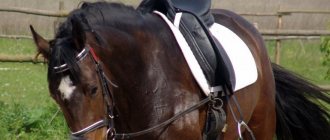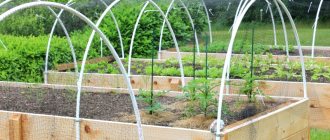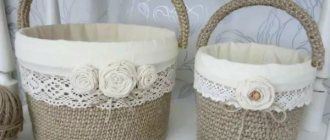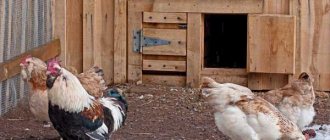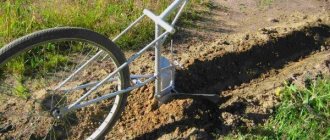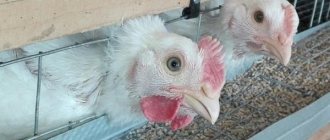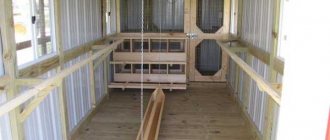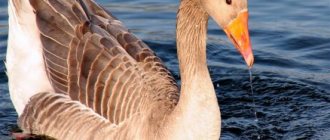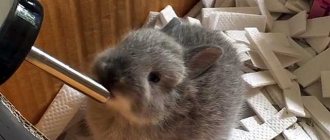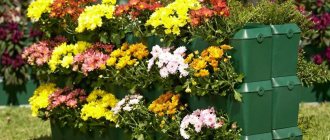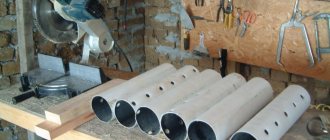Choosing a location for a building
Pigeons are shy animals. They do not like noise, and with constant stress in urban conditions, they begin to lose their feathers and skip the breeding season.
As for purebred pigeons, they are even weaker, easily susceptible to various infections, and in case of constant stress they lose any external attractiveness. Therefore, if a breeder wants his pets to be in order, and also wants to admire their beautiful plumage, he needs to choose a place as far as possible from the bustle of the city.
In the city it is very difficult to find a quiet corner. You can consider the following places:
- areas adjacent to public parks;
- closed courtyards of low-rise buildings;
- vacant lots next to private sectors.
Naturally, if the breeder lives in an apartment, he will have to place the dovecote on a site other than his own. The construction will need to be approved by the municipal administration. Even in the capital you can find several legal pigeon coops, which are still successfully operating in common areas.
Dovecote - drawings
The pictures below show drawings of dovecotes. The drawings are very easy to navigate. Before building your dovecote, it is recommended that you familiarize yourself with the drawings of the most common designs.
Drawing of a dovecote photo
Drawing of a large dovecote photo
Small dovecote for 10 pairs of pigeons drawing
Large dovecote for 100 pigeons drawing
Ridge dovecote drawing
A ridge dovecote can be installed directly on the ridge of the roof. This dovecote design is perfect for a beginner pigeon breeder.
Ridge dovecote drawing
Drawing
Tools and materials
A specific list of tools cannot be determined in advance. It all depends on the types of dovecote, which are discussed in detail below. Here is a set of materials for the simplest, hinged type of structure:
- Rabitz;
- lining;
- wooden poles;
- 1-2 doors;
- nails and screws for fastening;
- metal corners for connecting the frame;
- hinges for hanging doors;
- special bracket for firmly securing the suspended structure to the wall.
In budget dovecotes there is always a chain-link mesh. More expensive building options can do without it, but require the purchase and installation of full-fledged spiral staircases, the creation of many compartments with doors, etc.
You can create a building for breeding pigeons not only from wooden components, but also from metal and brick. As a decoration and protection from traces of pollution, some owners tie a thick rope around the outer part of the dovecote.
The list of tools is also different. For the simplest construction you will need:
- hammer;
- wire cutters;
- saw;
- drill and screwdriver;
- sandpaper or grinding wheel;
- screwdriver;
- construction line.
If the building is being created from metal, a welder, cutter or tin snips may be required.
Aviary for dovecote
An aviary for pigeons is a kind of frame that occupies a certain territory and is covered with a metal mesh. The aviary plays a very important role for pigeons. Although some pigeon breeders consider the aviary an unnecessary addition.
As a rule, the enclosure is located outdoors. Making an aviary for pigeons with your own hands is very simple. It is necessary to make a wooden frame of the required size and cover it with mesh. It has been noticed that pigeons kept in an aviary are much less prone to various diseases.
There is also an indoor version of an aviary for pigeons. It is installed in the brightest part of the dovecote. This part is fenced with a net.
Any enclosure should be spacious. It is built based on the calculation of 0.5 square meters of area per pair of pigeons.
Additional requirements
The dovecote should not be located next to the following objects:
- pigsties;
- other people's dovecotes;
- cesspools;
- large crowds of people;
- city landfills and trash cans.
If the building will be erected on your own plot, it is generally advisable to place it as close as possible to the center of land ownership. In this case, the influence of neighbors and their potentially dangerous factors on pigeons will be minimal.
You should especially avoid chicken coops and other places where birds are raised: from them, diseases can be very easily transmitted to birds simply through the air, and even more so through direct contact.
For birds, everything they encounter during flight is dangerous. Particularly avoided:
- power lines;
- multi-storey buildings;
- tall trees.
Trees pose a danger mainly only in bad weather. Their large branches, breaking off under the influence of strong winds or a heavy layer of snow, can destroy the structure and damage the birds themselves. If there is no place other than under a tree to place the structure, it is advisable to at least support the most dangerous branches.
Birds get used to power lines, but not right away. If possible, the dovecote should be at least 10 meters away from them so that the birds do not touch the wires when landing.
Dovecote on the balcony: requirements for placing birds in the apartment
Owners of well-appointed apartments can also create a piece of paradise with pigeons on their balcony. For those who like to keep feathered friends, it is important to follow the following rules:
- A spacious room is necessary for the well-being of birds and their reproduction.
- The consent of neighbors is an important criterion that should be adhered to, because not everyone will be happy to listen to the cooing of pigeons around the clock, the constant sounds of flapping wings, or put up with a lot of bird droppings on the windows.
- Creating a place as close as possible to the natural environment.
- Ensuring the safety of birds - it is important to make sure that the birds are not injured due to an unsuccessful landing or get caught on hanging wires or metal elements.
- Shading of the balcony facing the sunny side.
You can't have too many pigeons on your balcony
- Covering the entire window space with a mesh, which should be fixed at a distance of 15 cm from the glass.
- The perches must be firmly attached so as not to alarm the pigeons.
- Insulation of the ceiling, walls and floor of the balcony to prevent drafts and humidity, which can lead to diseases in birds. Plywood and cardboard work well as insulation.
- When constructing a structure, practicality and functionality are in the foreground, while the uniqueness of the design fades into the background.
- The dimensions of the nesting boxes should be large enough to accommodate a pair of pigeons that will give birth.
- On the balcony you will need plants that can serve pigeons as a source of vitamins and even as building material for nests.
It is recommended to plant plants on the balcony next to the dovecote
- The width of the feeder should be such that all the birds can fit there at the same time, otherwise, by forming groups, they will only scatter the food.
- The arrangement of the premises should allow for unhindered cleaning in all places.
- The desire of pigeons for frequent bathing should be satisfied by placing wide containers of water.
- The number of pigeons on the balcony is limited, since at least 1 m2 must be allocated for each of them.
Video: experience of keeping pigeons on the balcony, pros and cons
Types of pigeon houses
In urban and rural conditions, you can build 4 different types of dovecote. You should choose a specific design based on your own budget and the capabilities of the land plot.
Even in the city you can place a well-functioning dovecote, although if it does not occupy a separate area, there will be slight difficulties in caring for the birds.
Hanging dovecote
A hanging structure is the most budget option. This type of construction is used mainly in the private sector or in rural areas. The essence of the design is that it is attached either to the roof of the building (if it is flat or with a slight slope) or to the very top part of the wall of its second (third) floor.
The dovecote itself is a box with a metal mesh and a wooden frame. There are shelves inside, and there are also two doors: a hatch for birds and a door for cleaning the room by a person. There is no roof as such. All walls and the upper part of the box are made of chain-link mesh. The floor is made of boards.
The advantages of this option:
- fast production;
- Even a beginner can handle the creation;
- you can place a dovecote even if there is not enough space for it on the site;
- suitable for beginner breeders;
- minimum manufacturing cost.
Nevertheless, there are more disadvantages of this design than advantages:
- Despite the simplicity and speed of production, the box turns out to be inconvenient for birds to live in. The pigeons in it are not protected even from rain, let alone frost, snow, and the scorching sun.
- If desired, if the top hatch is left open, a predator (for example, a weasel or a bird of prey) can enter the building. Pigeons and their chicks are not protected from all the dangers present in nature. Because of this, there is a high mortality rate of chicks, as well as adult animals, in hanging boxes.
- Inconvenient location. Due to the fact that you need to get to the dovecote either through a hatch in the roof or using an extension ladder, cleaning it and generally observing the animals turns out to be very difficult. This affects the lives of pets: birds receive insufficient care and attention, their cage is cleaned too rarely.
- The breeder himself may get tired of constantly moving to the roof and give up breeding pigeons altogether. This option is especially inconvenient for the elderly, people with limited mobility and those who, for health reasons, cannot constantly use a ladder.
Pedigree birds are not bred in hanging dovecotes. This is simply not practical: breeding will not give the necessary results due to the high mortality rate of chicks, moreover, weaker purebred birds can easily die in such uncomfortable conditions.
Tower dovecote
This is a much more popular option among professional breeders. The tower building is suitable for breeding purebred pigeons, as it has a high degree of safety.
Features of the structure:
- The birds inside such a building are protected from cold weather, precipitation, as well as attacks from various predators. It is easy for the owner to monitor the condition of both adult individuals and recently hatched chicks.
- The structure is, as the name implies, a tower. Typically the structure has 2 to 4 levels. On the first one, the owner arranges a warehouse with supplies for feeding, as well as tools for cleaning up after the birds.
- Starting from the second, nests of pigeons are located. The section with nests should be at least 2 meters away from the ground so that various predators cannot get to them.
- There are windows along the perimeter of the towers. Each window is one compartment with one slot. Perches or full-fledged platforms can be attached under the windows for the convenience of pigeons. All compartments are separated from each other, so you know exactly which nest belongs to which individual. The openings (windows) for entry should not be too large so that cats or large birds of prey cannot pass through them.
The type of construction may vary depending on the builder's budget. For example, the most primitive turrets are small in diameter, and the owner gets to the windows using an extension ladder.
Much more convenient is the more expensive option, which involves the location of a spiral staircase inside the tower. Thus, the core of the building turns out to be hollow, and, once on the flights of stairs, the owner gains access to each nest from the inside.
This makes caring for the chicks and cleaning easier, but building such a dovecote is difficult both from a financial and technical point of view. We'll have to bring in builders.
The undoubted advantages of this option:
- pigeons are protected from external influences;
- birds can be kept at any time of the year;
- ease of bird cleaning;
- ease of selection.
Dovecote in the attic
If the breeder has a residential or non-residential, but insulated house with a free attic or attic space, the best option would be to create a dovecote in the attic. Unlike the option with a hanging box, this one does not pose a danger to the birds themselves.
The design has the following features:
- the main part of the dovecote, including feeders, sections for nesting and a place for the person who will do the cleaning, are located inside the attic;
- an additional walking area is being added, which is a balcony with a mesh that blocks access from all sides;
- access to the attic is not through a ladder, but using the house’s own staircase, which is convenient for the breeder.
This construction method is the least labor-intensive. It is enough to arrange a walking area, create openings for exit into it, and also arrange places for nests and feeders.
There is no need to build a building from scratch, unlike the two methods listed above. Construction costs are minimal: you only need a chain-link mesh and a few boards for the balcony; perhaps the breeder will also install perches.
It is most convenient to clean this dovecote, since the owner has access to all surfaces. The only drawback is the large cleaning area. However, given the easy accessibility of surfaces, it can be dealt with in approximately the same time as in a tower structure.
Dovecote on the balcony
Not all people who would like to breed pigeons have the opportunity to place a full-fledged building. Some people don’t have enough budget, while others are limited by urban conditions or a small area of a suburban area. In this case, the only thing left for the breeder to do is place the dovecote on the balcony.
This option is not suitable for breeding a large number of animals, given the small area of standard balconies, but 5-6 pairs will definitely fit comfortably.
Features of the dovecote on the balcony:
- Before construction, you need to take into account the attitude of those around you towards the potential neighborhood of pigeons. They can file a complaint with the relevant authorities, and then, if the owner of the pigeons lives in an apartment building, he can be forced to stop breeding. However, if the neighbors are calm about this activity, and the owner is ready to deal with dirt and smell on a daily basis, problems should not arise.
- On the balcony there are either special perches and recesses for nests, or boxes (or a rack with square sections) in which pigeons will live. A feeder and drinking bowl are installed, and it is advisable to install baths for bathing.
- The balcony should be insulated and provided with electricity and light to extend daylight hours in winter. If the balcony is on the south side, you need to shade it. If desired, you can make small mesh structures for bird walking. You can make them yourself or purchase ready-made designs (made for walking cats).
On the balcony you can keep birds in excellent conditions. The only negative is the limited area of the room.
Rules for maintaining the premises during its operation
Healthy, active and constantly breeding birds will delight their owner if their home is always kept in proper condition.
Primary treatment and subsequent disinfection of the dovecote
Many people believe that low or high temperatures characteristic of winter and summer, respectively, are sufficient to eliminate pathogens. However, this opinion is wrong, because only proper disinfection can cope with this problem. According to the requirements of poultry house maintenance, treatment should be carried out monthly for preventive purposes.
A properly selected product can protect pigeons and their chicks from disease and death. The choice should be made depending on what is causing the disease. The main rule in this case is that the solution is completely safe for birds.
Maintaining cleanliness in the dovecote is a guarantee of their health
The main disinfectants are usually:
- caustic soda - solution 1–2%;
- slaked lime - 3%;
- bleach – 3–4%;
- xylonaft - solution 3–4%;
- chlorocresol - solution 2%;
- chloramine - 3–4%;
- formalin - 1%;
- paraform - 2%;
- other formulations recommended by a veterinarian.
Potassium permanganate is also a disinfectant, but its effect is very weak, the period of use is quite short, and when it interacts with dirt and droppings, it changes color.
In the fight against smallpox viruses, you cannot do without caustic soda, chlorocresol or slaked lime. A solution of formaldehyde, chloramine, caustic soda, and bleach will help eliminate pseudoplague pathogens. Paratyphoid fever (salmonellosis) will gradually recede if a solution of slaked lime, caustic soda, xylonaftha or formaldehyde is used to treat the room. For the prevention and treatment of psittacosis, caustic soda, formalin and chloramine are recommended. Formalin and paraform successfully help with aspergillosis, and coccidiosis and chlorocresol can also be added to them. Trichomoniasis cannot resist if bleach or chloramine is used for disinfection.
It should be noted that prophylaxis should be carried out once a month, even if the birds are healthy and energetic. If symptoms of any of the listed diseases are detected, it is necessary to carry out forced treatment every week; the effect will be maximum within an even shorter interval - up to 5 days.
You yourself can prevent the spread of the disease in pigeons
Before starting disinfection work, all bedding and other removable elements of the room must be completely removed and disposed of. After this, droppings are carefully cleaned from walls, perches and other available surfaces.
The detergent is prepared from modern liquids or from ordinary soap: 500 grams of soap per 10 liters of water. The entire room is thoroughly washed with this composition, after which it will be ready for the application of disinfecting solutions. Under the influence of heat treatment with a blowtorch or gas torch, there is a high probability of destroying pathogenic microbes.
Regardless of the chosen treatment method, pigeons must first be released from the premises. The procedure should be carried out with care so that the products do not get into the feeders and drinkers, but, ideally, it is better to clean and thoroughly rinse these containers. At the end of the work, the dovecote is well ventilated and dried. Don’t forget to protect your own hands, body and respiratory organs.
Video: features of keeping pigeons in a dovecote
Despite its apparent simplicity, building a dovecote is quite difficult; special skills are required, but following all stages of work, having the necessary materials and tools with due patience will result in a good dovecote. Such a poultry house will not only be a cozy home for pigeons, but also a corner for privacy and relaxation for people who come to enjoy the beauty of these amazing birds.
- Author: Anastasia Mikitalo
Rate this article:
- 5
- 4
- 3
- 2
- 1
(2 votes, average: 4 out of 5)
Share with your friends!
Instructions on how to make a dovecote with your own hands
After choosing the optimal design and preparing materials and tools, you can begin construction. The detailed algorithm presented below will help you carry it out quickly and without difficulty.
Parameters of the future dovecote
The dovecote must meet the following requirements:
- at least one square meter per individual (if there is a large walking area, 0.5 sq. m per couple is allowed);
- each nest is located in a separate section;
- compartments should be made for young and adult birds;
- nests and feeders should not be located too close to each other.
Further parameters depend on the type of design chosen.
Construction stages
It is advisable to erect the structure separately from a residential building. Construction begins with the foundation. The following is a step-by-step algorithm of actions.
Laying the foundation
Foundations are required only for permanent structures (for example, full-size towers). In most cases, it is enough to clear the area, level the soil and secure it with tiles or bricks.
Floor
The floor is made of wood. It is convenient to change, although the disadvantage is the high absorption of odors. If possible, an additional coating should be made on top of the wooden covering, for example, linoleum. Cold stone is not recommended. The floor is additionally covered with hay.
Wall installation
Walls are often made of wood. First, a frame frame is erected, then boards are laid on it. You can add insulation between the outer and inner layers of boards to keep the building warm in winter.
Window
Window openings should be located on the east and south sides. They don't have to be large, small windows will suffice. Window openings are additionally reinforced with corners.
Roof construction
The frame is created from timber. The type of roof is chosen by the owner; the simplest is gable. It is imperative to lay insulation, a waterproofing layer, then tiles or metal as an external covering.
Ventilation
Optimal ventilation is a combination of a hood located in the ceiling and one or two mesh doors. They should be covered with a fine mesh so that air can pass through, but not various insects. It is better if the windows with mesh are closer to the floor, so the air will circulate better.
Walking area
The walking area is the last to be developed. It is enough to make a small balcony with a wooden floor and mesh walls and ceiling, attached to the external wall of the building. If the pigeons are kept in the private sector and are well housetrained, there is no need for walking: just letting them out to fly is enough.
Interior arrangement of the dovecote
The internal structure is no less important than the external one. Pigeons should be comfortable in the building and should be given enough space to move around.
Perch construction
Perches should be located at least 30 cm from the ceiling. They usually look like the roof of a house (a triangle without the bottom). Perches are made from perches 5 cm wide. They are usually located on one side of the wall. On the other, nests are made.
The optimal type of nests is a simple rack, purchased or made independently. The shelving sections should have dimensions of 40 by 35 by 75 centimeters. Additionally, plants should be placed inside the dovecote or straw should be scattered. This will allow the birds to build nests.
Drinkers and feeders
Feeders are made wide and long so that several individuals can eat from them at the same time. Buy automatic drinkers, which are sold in any pet store. Water is changed daily, food as needed.
Interior equipment for pigeons
After completion of construction, you can begin the internal arrangement of the dovecote:
- Communications are being laid: electrical wiring is carried out, a heating and ventilation system is installed.
It is necessary to completely close access to electrical wiring
- Perches are created individually for each bird. The options here can be different, for example, placing the perches in the form of a honeycomb or simply fixing the bars under the ceiling or nailing several shelves where the pigeons can decide for themselves who to sit with.
- Nests are made; their number will be 2 times less than the number of perches, but they are placed in the same room. Homemade or factory-made wooden boxes suitable for the size of the pigeons are suitable for work.
There should be enough nests in the dovecote
- Feeders and drinkers are installed (automatic or traditional models can be used). It is recommended to immediately think about the chicks and make a separate feeding area for them.
In general, the internal work can be considered complete; only minor improvements remain in the form of installing doors, windows, an enclosure and other necessary elements.
Linoleum is a comfortable lining in a dovecote
Linoleum, having special characteristics, is well suited as a lining for a dovecote. The covering is easy to clean and wash; in cold weather, frozen droppings quickly come away from it. For ease of use, the material should be cut into several small pieces, which are easier to lift when processing the floor under the coating and in places where it bends.
When using linoleum, it is important to remember its negative properties:
- may break when using a scraper to clean the room;
- is not capable of transmitting moisture, so if water gets under the coating, then the process of rotting of the floor is inevitable; the appearance of moisture under the linoleum is provoked by strong temperature changes - condensation appears; if the material has a fabric base, it also begins to rot;
- Frequent cleaning of the room is required, since the coating does not absorb moisture and excrement does not dry out, which leads to rapid contamination of the floor.
The floor in the dovecote should be such that it is easy to care for
Arrangement of nests for pigeons
As the nesting season approaches, it is necessary to transplant the birds into a temporary cage and treat the room in accordance with the above requirements. The choice of nesting devices depends on the breeds contained and their preferences. As a rule, 2 sets of nests are prepared for each pair - a pairing nest and one for breeding. You can independently make an ordinary wooden or plywood box measuring 20x20 cm with sides 5–7 cm high. To prevent the eggs from rolling into the corners, they should be hammered with fine sawdust or covered with a plaster mixture.
In each box you need to put a rounded nest - this can be a carved wooden nest, a plaster product or a plastic container of suitable sizes. Pigeons accustomed to nesting in natural conditions will like nests in the form of baskets, which you can make with your own hands from rope, willow twigs or soft wire.
For nests you need to equip special places
Small breeds of pigeons like doves are unpretentious and can easily fit in a box made of plywood with walls 12x15 cm, while the sides should not exceed 5 cm. If you don’t have time to make a nest yourself, you can get by with a nesting base for canaries, which the pigeons themselves will equip with the help additional twigs, grass, leaves, feathers.
The nesting litter plays the role of insulation, so wood ash and sawdust, mainly from coniferous trees, are poured into the bottom of the nest. Thin branches, straw, hay are laid on top of the resulting layer; for high-quality insulation of the nest, small pieces of burlap can be laid on all sides. In the absence of bedding, the nest poses a danger to the health of the chicks - the babies’ fingers can get stuck in the mesh used to remove droppings, thereby causing their deformation.
Operating rules
In order for the structure to last as long as possible, you need to take care of the following points:
- Humidity level . It should not be high, otherwise mold and mildew will quickly form on the walls. If the breeder’s area of residence is generally damp, it is necessary to impregnate the wood with special anti-fungal compounds.
- Ventilation. The frequency of ventilation determines whether the unpleasant odor will be absorbed into the wooden elements of the dovecote. If you ventilate the room in a timely manner and also clean it, the dovecote will not have an unpleasant specific odor, due to which you will have to change part of the internal structure.
- Hygiene. It is very important to regularly remove pigeon waste products. Not only their standard of living, but also the service life of the building depends on this. Bird droppings in high concentrations can even corrode the organic components (cardboard, wood) of the dovecote.
- Anti-corrosion treatment. All metal parts must be treated or painted to resist corrosion and rust.
Other operating conditions depend on the characteristics of the design chosen by the manufacturer. It is necessary to provide birds with fresh water and food every day, monitor the condition of their nests and check the chicks.
Dovecote photo
Dovecote photo . As stated in the announcement of the article, we are posting photos of dovecotes. The dovecotes in the photo have different designs, there are very interesting and beautiful views.
Dovecote on the roof of the garage photo
Original dovecote photo
Large dovecote photo
Dovecote in the attic photo
Dovecote around the house photo
Small dovecote with a large pen photo
Beautiful dovecote near a pond photo Two-story room for pigeons
Compact dovecote
Beautiful dovecote design
Small room for keeping pigeons
Photo
Very original dovecote
Additional recommendations
It is necessary to take into account several important factors that affect the life expectancy of pigeons, the quality of their offspring, as well as their appearance:
- The temperature in the dovecote should not fall below -7 degrees Celsius. If pigeons are kept in a temperate or northern region with cold winters, it is necessary to take care of heating. The minimum requirements are to cover the inside of the building with clapboard with insulation. It is best to provide minimal heating (the pigeons should not have access to the wires and should not get burned).
- Maximum air heating is +20 degrees. If the heat reaches 25-30 in summer, you definitely need to shade the dovecote. Even in winter, strong heating can occur if, for example, pigeons live on a south-facing balcony. You can ensure the correct temperature with proper ventilation and insulation.
- Sunlight should easily penetrate into the pigeons' home if they spend most of their time on the balcony or in the attic. The windows should not be too large, because a large amount of light has a bad effect on the chicks, but at the same time, adults should receive a sufficient amount of ultraviolet light.
- The building is made bright. Pigeons have a developed memory, and they return to their native dovecote. However, if it is no different from other buildings, it will be difficult for them to distinguish their home place after a free walk.
If the owner takes care of ensuring proper nutrition and regular hygiene of the birds, then breeding will be a pleasure. A well-built dovecote can last up to 20 years without requiring major repairs.
0
0
Copy link
A detailed description of the process of creating a dovecote of standard sizes
Any construction is impossible without a specific plan, drawing, from which the size of the future premises and the consumption of materials for it will be known. The whole process consists of several stages, at each of them you need to carefully fulfill all the requirements:
- Foundation - laying the foundation. Despite the light weight of the dovecote, experts recommend mounting it on at least a strip foundation, which will help prevent distortions in the room due to ground subsidence. A trench depth of 40 cm and a width of 30 cm will be sufficient. Gravel or brick chips are laid at the bottom, reinforcement is attached and cement mortar is poured. To ensure that the frame is securely fastened, it is recommended to insert a beam or steel angle into the foundation within an hour after concreting. To build walls, pillars are placed in the corners of the foundation.
If the dovecote is a solid building, then the foundation is mandatory
- Installation of the dovecote frame. Once the foundation has hardened, a wooden frame can be installed on it so that its elements are attached to the main pillars and to each other. All that remains is to make the roof.
It is recommended to make the frame of the dovecote wooden
- Finishing work. The inside of the dovecote is covered with boards, taking into account the location of the entrances, window and door openings. For tightness, a layer of roofing material or film is laid between the wooden parts. Installation of dense foam plastic will provide reliable insulation of the room, which can be used to keep birds all year round without fear of cold weather.
You can decorate the dovecote from the outside with any façade material
- Roof installation. The roof structure is carried out depending on the created project; it can be gable or single-pitch. If desired, it is possible to install a small balcony like a mesh aviary, where pigeons will walk if there is none in the house itself. Roof installation involves the assembly of a simple wooden frame followed by covering with roofing felt or slate. These materials are considered the best option for this room, because they are the ones that can withstand not only the influence of atmospheric influences, but also the activities of feathered residents.
The roof of the dovecote is best covered with slate or roofing felt.
- Ventilation arrangement. In the absence of sufficient ventilation, pigeons can get sick, and an open window cannot fully cope with this task. A simple but reliable way to purify air is a supply and exhaust ventilation system. To create it, it is enough to make a hole 10–15 cm from the floor and a similar hole under the ceiling. Be sure to install a grill on the bottom hole to keep out foreign animals. Special doors for ventilation will help to keep warm in winter. As for ordinary windows, if they are located opposite each other, a draft cannot be avoided. Window sills are not needed in a dovecote, but metal mesh on the inside of the windows will help prevent many troubles. Natural ventilation will not be able to protect the room from dampness, so you should consider installing an additional ventilation source. Insufficient ventilation can lead to the formation of bath dampness, which can cause anemia in pigeons.
It is necessary to ensure free access to air in the dovecote room
- Floor installation. Another way to eliminate moisture is to properly arrange the floor. It should be installed at least 25 cm from the ground, which can be easily done with the help of brick pillows. The main criterion when laying the floor is the absence of sources of heat leakage. At the moment there is nothing better than wood, so it is enough to plan the boards well and fit them tightly to each other. As an alternative, you can make an adobe floor, which will contain crushed stone, gravel, and construction debris. The resulting mass is laid at a thickness of 20 cm, and greasy clay (10 cm) is poured on top with the addition of broken glass and granular sand. Thanks to broken glass elements, the room will be protected from rodents. Next, coarse sand, sawdust or shavings 5–7 cm thick are poured on top.
Video: how to make a dovecote with your own hands
Interior decoration
The inside of the dovecote is not very diverse. Usually there are 2 adjacent solid working walls. Barred sections for jigging and steaming pigeons are mounted on one wall. The second wall is occupied by personal perches for birds to rest.
It is believed that the section for pairing pigeons, in other words, the cage should be 75 cm long, 35 cm high and 40 cm deep.
It is highly desirable to provide for the possibility of dividing the cell in half. This is necessary to protect the dove sitting on the eggs. It would be good if each such section was equipped with a taphole.
Personal perches are horizontal platforms 50-70 mm wide and about 140 mm long. On both sides, 2 platforms 140x140 mm are attached to this bar at an angle of 45 degrees downwards. It turns out to be some kind of house. Side plates are needed to prevent birds sitting above from crap on those below.
For the pigeon house you have made, you still need to provide lighting and heating. One light bulb is enough for lighting. With heating, decide for yourself, although the choice is not great, you can either install an oil-fired electric heater, or buy the now popular “Ufo” with radiant heating. The normal temperature in a dovecote is 7-20 degrees.
Construction parameters
According to the rules, the minimum allowable volume for 1 pair of birds is 0.5 cubic meters. m. But experienced pigeon keepers recommend making a house for pigeons at the rate of 1 cubic meter. m for each pair. Moreover, it is advisable that you have at least 10 free cubes in stock, because do not forget that the birds will breed.
The dovecote must be able to be divided into 3 equal sections. For the winter, females should be separated from males, and you will need a third section for raising fragile young animals.
The ceiling height in a simple dovecote is about 2 m. If you plan to keep and breed several breeds, you will have to build a tiered dovecote with the ability to separate sections by breed.
The minimum ratio of window area to floor area is 1:10, but the wider the windows, the more comfortable the birds will feel.
The height of the entrance from the floor is of great importance; it depends on the breed of birds. So, for racing pigeons, in other words, postmen, the entrance is mounted at a height of 1.5 m. While for powerful, large birds it is installed at a height of no more than half a meter.
